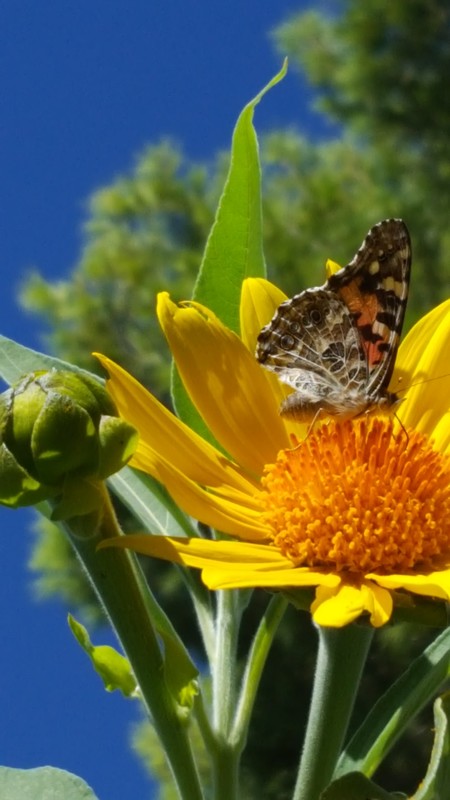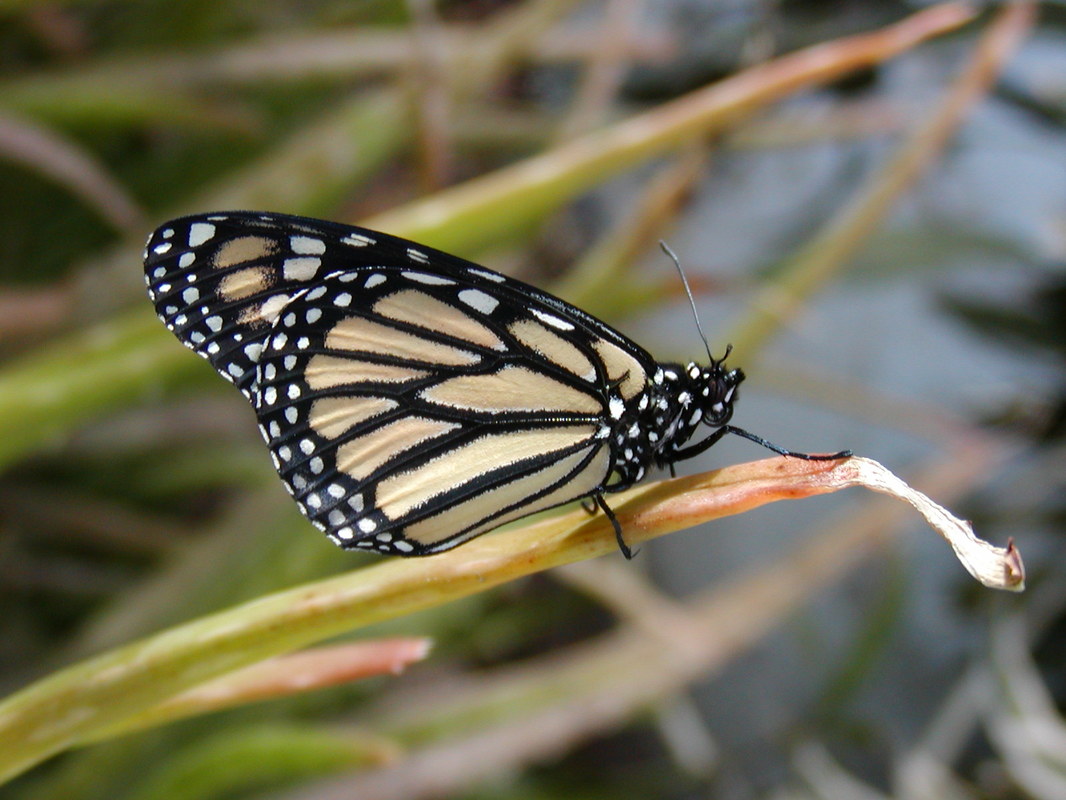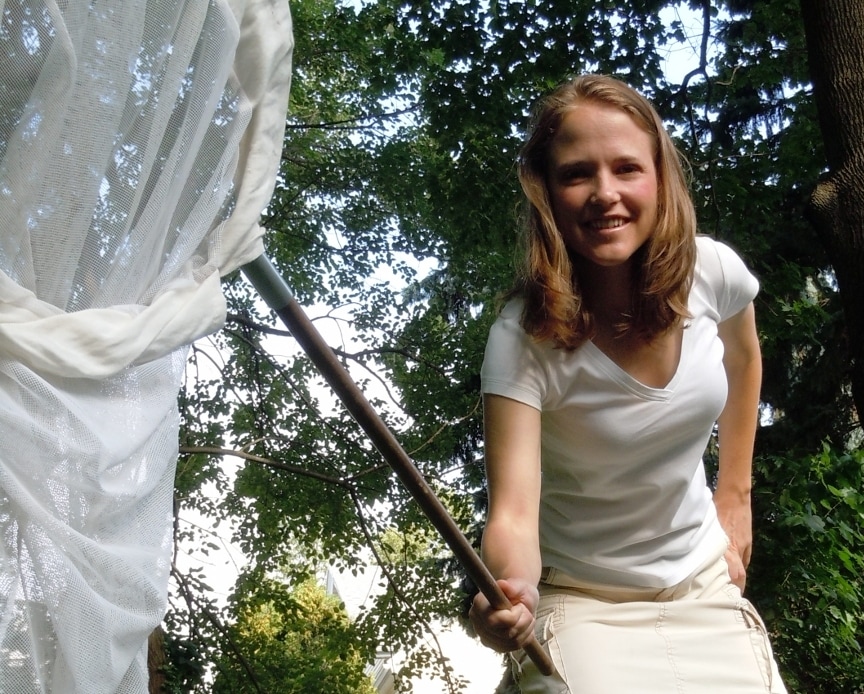By: Dr. Katy Prudic
|
When butterflies develop wings, they are much less appealing to most predators. The caterpillar fat stores are converted into a new butterfly body that eats nectar instead of its previous diet of leaves. Butterflies travel from flower to flower in search of nectar, pollinating these plants along the way by transporting bits of flower pollen.
These delicate creatures flit across a mountain meadow effortlessly and with style. On the surface their grace and beauty may make them seem like passive supermodels of the insect world, but their contributions go much deeper. Butterflies are important members of an ecosystem serving both as a valuable food source and by fertilizing (or pollinating) plants to make seeds. Studies show that these insects’ populations and those of other pollinator species are in decline. Most of the research to date has been conducted near urban or populated areas. I’m joining forces with Adventure Scientists to research what’s happening to butterflies in the backcountry. |
Adventure Scientists’ volunteers will collect data on what butterflies are present over the course of the pollinator season (July – October), and which nectar plants they frequent. We will collect this data with eButterfly and use National Phenology Network protocols so that the backcountry data will be in sync with frontcountry data collected by other citizen science groups.
My research have broadened our understanding of how butterflies play important roles in human success and innovation. Without them our world would be a dismal place. Working with Adventure Scientists allows us to discover what butterflies are doing in the backcountry and how that affects butterflies in the frontcountry. It also helps us validate our predictive models giving us a more powerful conservation tool.
|
Dr. Katy Prudic is an ecologist, butterfly expert, and the principal investigator of the Pollinator Project, a collaboration with Adventure Scientists to record changes in nectar plants and butterfly pollinators in the backcountry. She works at the University of Arizona as an Assistant Research Professor of Entomology and co-directs eButterfly, a citizen science project focused on butterflies and environmental change, with Max Larrivee and Kent McFarland. In the few moments she is not engaged in scientific discovery, she enjoys birding, making cheese, and playing roller derby.
|



